CONSECUTIVE EXTERIOR ANGLES THEOREM
Subscribe to our ▶️ YouTube channel 🔴 for the latest videos, updates, and tips.
Consecutive Exterior Angles :
If two lines are cut by a transversal, the pair of angles on the same side of the transversal and outside the two lines are called consecutive exterior angles.
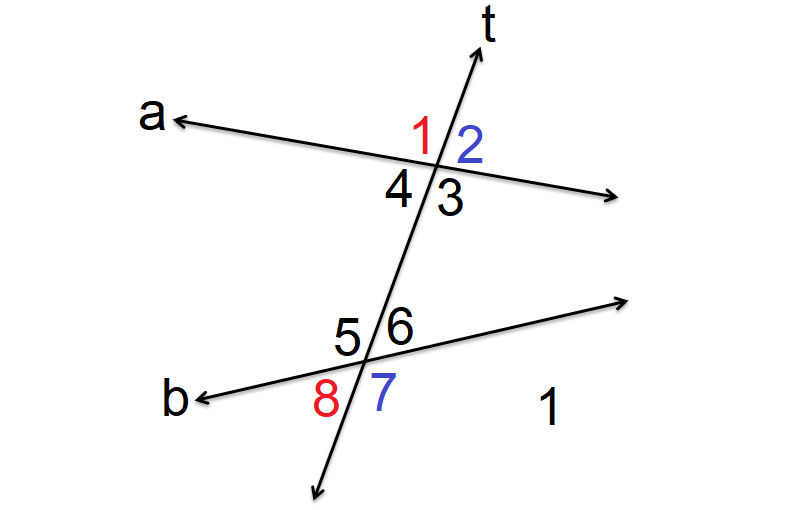
In the figure above, ∠1 and ∠8 are consecutive exterior angles, and also ∠2 and ∠7 are consecutive angles.
Consecutive Exterior Angles Theorem :
If two parallel lines are cut by a transversal, then the pairs of consecutive exterior angles are supplementary.
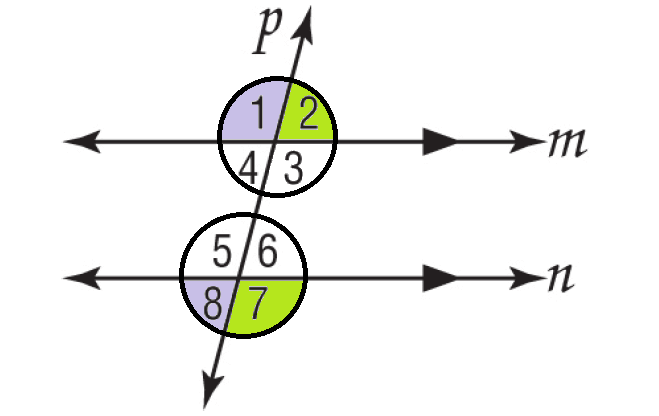
Given : m||n, p is transversal.
Prove : ∠1 and ∠8 are supplementary and ∠2 and ∠7 are supplementary.
|
Statement m||n, p is transversal. |
Reason Given |
|
∠1 & ∠4 - linear pair ∠2 & ∠3 - linear pair |
Definition of linear pair |
|
∠1 & ∠4 - Supplementary m∠1 + m∠4 = 180° ∠2 & ∠3 - Supplementary m∠2 + m∠3 = 180° |
Supplementary Postulate |
|
∠4 ≅ ∠8 and ∠3 ≅ ∠7 |
Corresponding Angles Theorem |
|
∠1 & ∠8 - Supplementary ∠2 & ∠7 - Supplementary |
Substitution Property |
Solved Problems
Problem 1 :
In the figure shown below, m∠1 = 105°. Find the measure of ∠8.
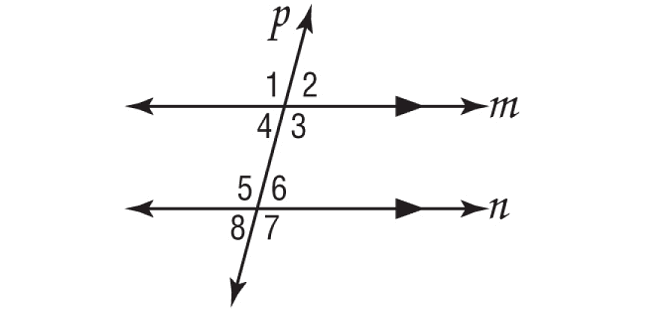
Solution :
In the figure above, lines m and n are parallel and p is transversal.
By Theorem, ∠1 and ∠8 are supplementary.
m∠1 + m∠8 = 180°
Substitute m∠1 = 105°.
105° + m∠8 = 180°
Subtract 105° from each side.
m∠8 = 75°
Problem 2 :
In the figure shown below, m∠1 = 102°. Find the measures ∠8, ∠15 and ∠10.
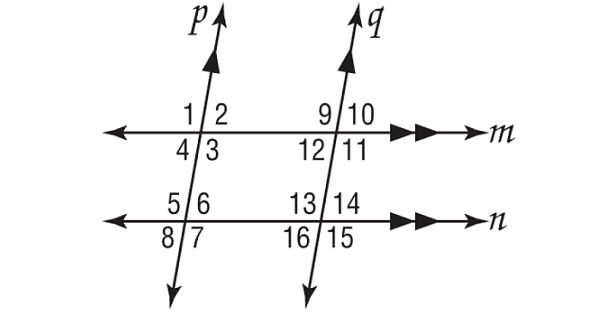
Solution :
In the figure above, lines m and n are parallel, p and q are parallel.
By Theorem, ∠1 and ∠8 are supplementary.
m∠1 + m∠8 = 180°
Substitute m∠1 = 102°.
102° + m∠8 = 180°
Subtract 102° from each side.
m∠8 = 78°
By Theorem, ∠1 and ∠10 are supplementary.
m∠1 + m∠10 = 180°
Substitute m∠1 = 102°.
102° + m∠10 = 180°
Subtract 102° from each side.
m∠10 = 78°
By Theorem, ∠10 and ∠15 are supplementary.
m∠10 + m∠15 = 180°
Substitute m∠10 = 78°.
78° + m∠15 = 180°
Subtract 78° from each side.
m∠15 = 102°
Therefore,
m∠8 = 78°
m∠10 = 78°
m∠15 = 102°
Problem 3 :
In the figure shown below, lines m and n are parallel and p is transversal. Find the value of x.
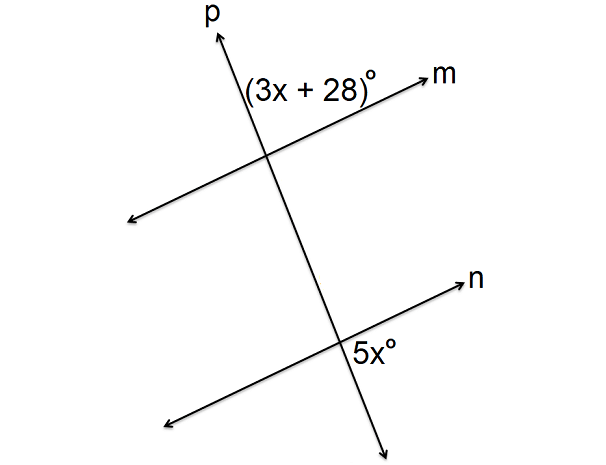
Solution :
In the figure shown above, lines m and n are parallel and p is transversal.
By Theorem, (3x + 28)° and 5x° are supplementary.
(3x + 28)° + 5x° = 180°
3x + 28 + 5x = 180
8x + 28 = 180
Subtract 28 from each side.
8x = 152
Divide each side by 8.
x = 19
Subscribe to our ▶️ YouTube channel 🔴 for the latest videos, updates, and tips.
Kindly mail your feedback to v4formath@gmail.com
We always appreciate your feedback.
About Us | Contact Us | Privacy Policy
©All rights reserved. onlinemath4all.com

Recent Articles
-
US Common Core K-12 Curricum Algebra Solving Simple Equations
Jan 07, 26 01:53 PM
US Common Core K-12 Curricum Algebra Solving Simple Equations -
10 Hard SAT Math Questions (Part - 4)
Jan 05, 26 06:56 PM
10 Hard SAT Math Questions (Part - 4) -
10 Hard SAT Math Questions (Part - 3)
Jan 05, 26 06:34 PM
10 Hard SAT Math Questions (Part - 3)

